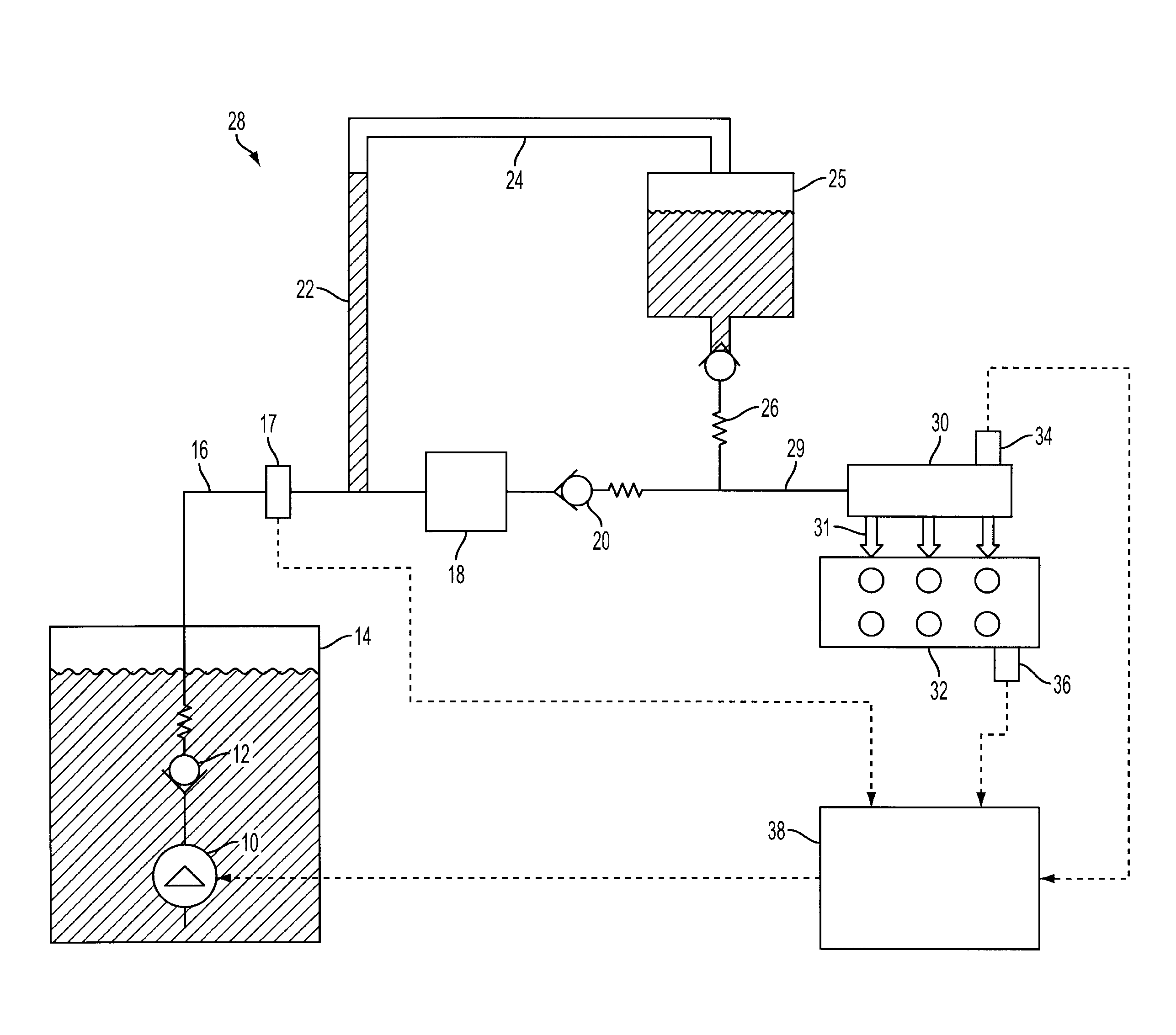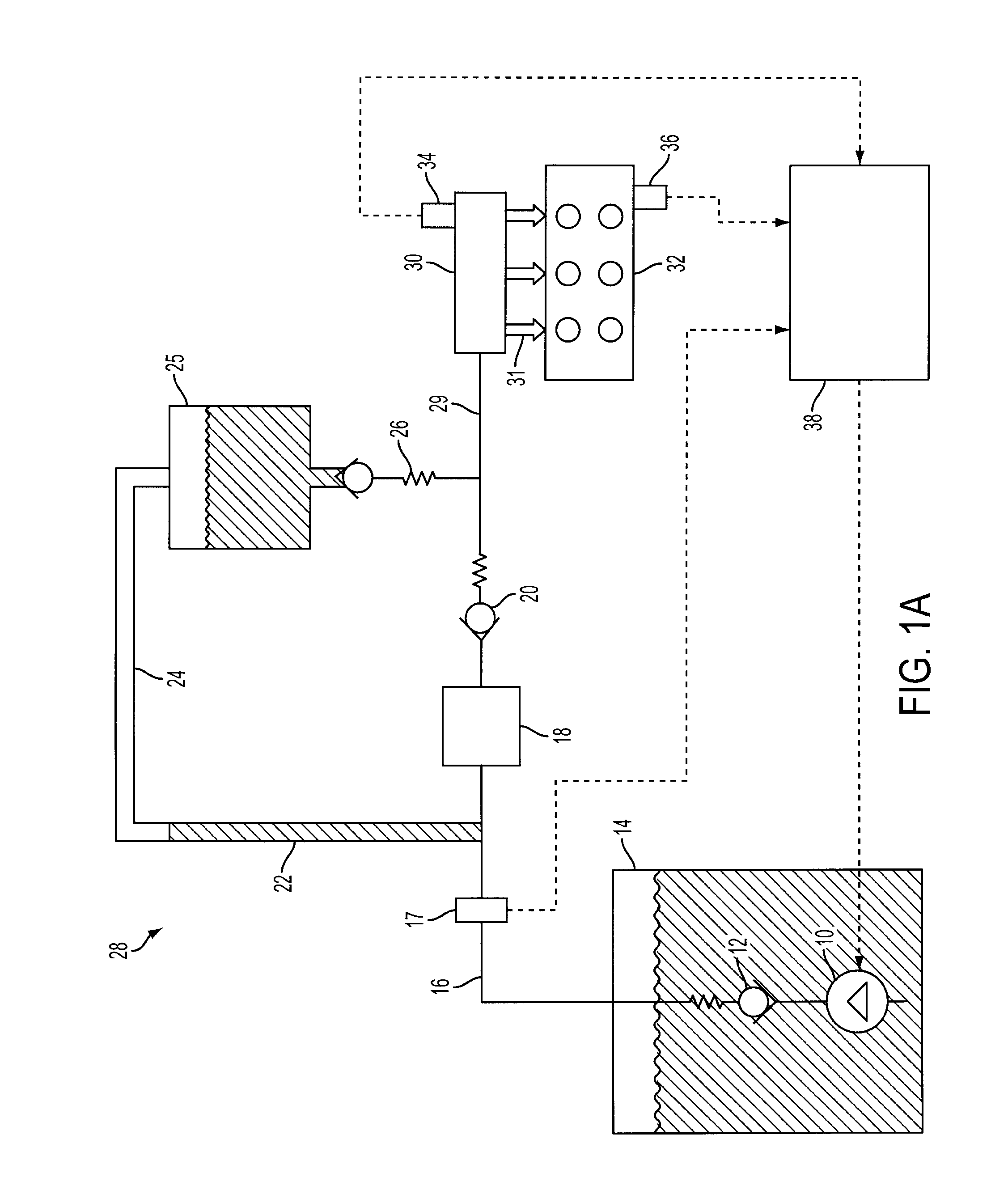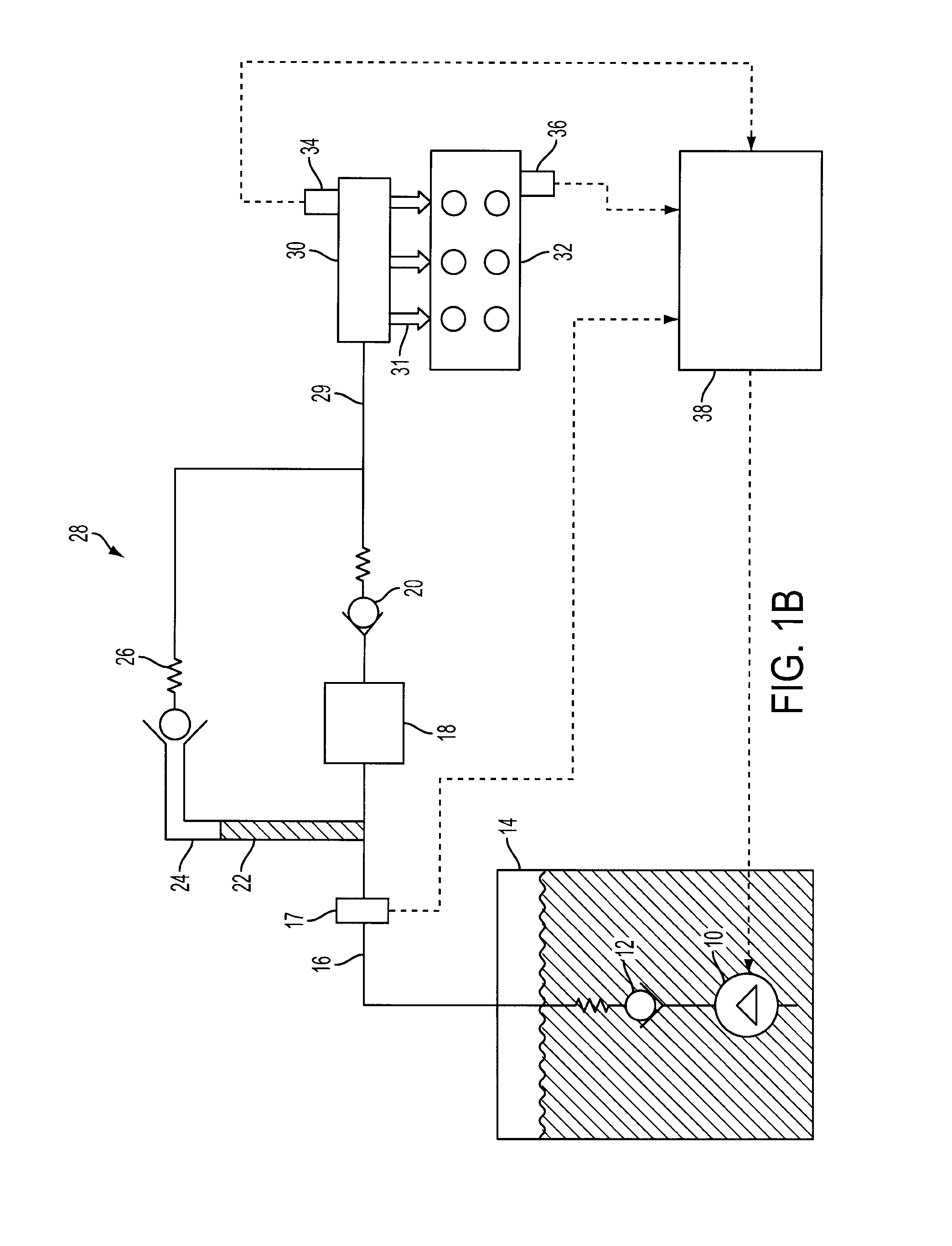Direct injection fuel system with reservoir
a fuel system and reservoir technology, applied in the direction of machines/engines, electric control, engine starters, etc., can solve the problems of reducing engine power and efficiency, fuel may not sufficiently mix with the air in the cylinder, insufficient mixing, etc., and achieve the effect of improving the fuel pressure ris
- Summary
- Abstract
- Description
- Claims
- Application Information
AI Technical Summary
Benefits of technology
Problems solved by technology
Method used
Image
Examples
Embodiment Construction
[0012]FIG. 1 shows a schematic depiction of a fuel delivery system for an internal combustion engine. Pump 10 may include various types of pumps, such as an electric pump operated at a fixed voltage where an in-tank or near tank regulator sets generated pressure, or an electronically controlled pump which runs at two or more voltage levels based on operating conditions. FIG. 1 shows the configuration for the latter pump. For example, the pump may operate at full power (e.g., 100%) or a reduced power level (e.g., 75%) based on operating conditions. In alternate embodiments the lift pump may run in a variable duty cycle. Controller 38 electronically controls actuation of lift pump 10. Pump 10 is fluidly coupled to check valve 12. In this embodiment check valve 12 is a ball and spring check valve that unseats at a specified pressure differential. In alternate embodiments there may be a series of check valve fluidly coupled to decrease the amount of fuel that leaks through the check val...
PUM
 Login to View More
Login to View More Abstract
Description
Claims
Application Information
 Login to View More
Login to View More - R&D
- Intellectual Property
- Life Sciences
- Materials
- Tech Scout
- Unparalleled Data Quality
- Higher Quality Content
- 60% Fewer Hallucinations
Browse by: Latest US Patents, China's latest patents, Technical Efficacy Thesaurus, Application Domain, Technology Topic, Popular Technical Reports.
© 2025 PatSnap. All rights reserved.Legal|Privacy policy|Modern Slavery Act Transparency Statement|Sitemap|About US| Contact US: help@patsnap.com



